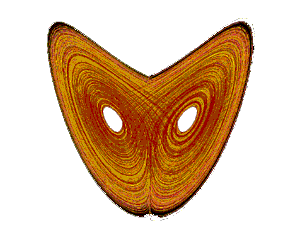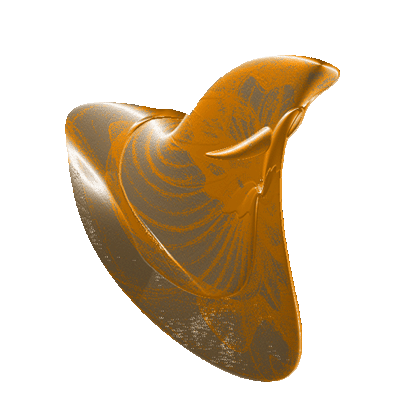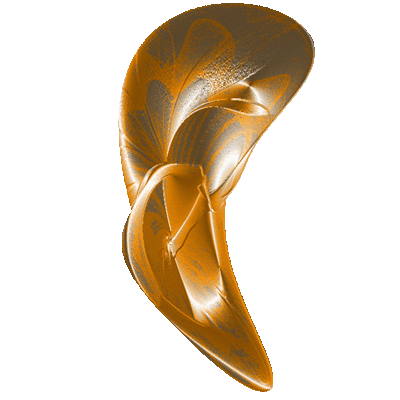

Mathematics of Strange Attractor Fractals
A classic approach from physics in the study of dynamic systems is to plot an orbit of a series of points. In our discussions of the Mathematics of Divergent Fractals and Mathematics of Convergent Fractals our primary concern was the escape of the orbit beyond a given radius (divergence) or capture by an attractor (convergence). In 1961 Edward Lorenz, a meteorologist at MIT, discovered what is now called the Butterfly Effect while simulating weather on his computer. He found that some iterative equations could produce dramatically different results with extremely small changes in the starting parameters. His most well known set of equations is the Lorenz Attractor. It is a model of turbulent flow.
dx/dt = a(y - x)
dy/dt = bx - y - zx
dz/dt = xy - cz
where x, y and z are variables, and a, b and c are constants. The time sequence for x, y and z gives orbits that spiral around each other, but in an unpredictable manner. The orbits show the behavior of fractals. The orbits occur in 3 dimensions. The image below is a projection of the x and y components onto the viewing plane:

There are many types of sets of equations that give rise to strange attractors, and they can have 2, 3 or more dimensions. Some of them can give rise to spectacular looking images. A three dimensional strange attractor can be viewed by ray tracing techniques. One of the more interesting sets of strange attractors are described by Julian Sprott, and are are systems of polynomial equations. The images below show 3-dimensional sections of a 4-dimensional Sprott attractor using UltraFractal formulas developed by Ron Barnett. The rotations for the second image move portions of the attractor that were in the 4th dimension into the viewable set of 3 dimensions.
 |
 |
| W axis in the 4th dimension | Rotate 60o around the axis
perpendicular to the XW plane Rotate -160o around the axis perpendicular to the ZW plane |